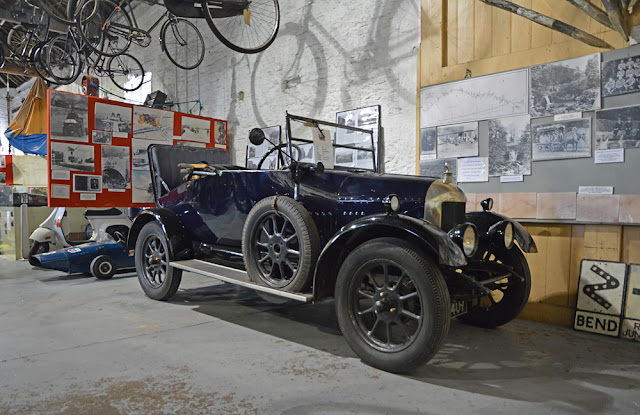On a recent trip back to Scotland my father and I took a day trip down into Northumberland and Cumbria to Alston.
Alston is the home to the South Tynedale Railway, a 2' gauge line built on the trackbed of an old North Eastern Railway branchline.
Much of the old standard gauge infrastructure remains or has been recreated.
I was particularly pleased to find the engine of the day was Barber, built 1908 by Thomas Green of Leeds.
Green's did not build many engines and I believe this is the only one operating and the only one left in the northern hemisphere
The engine is ex-Harrogate Gasworks, which had low clearance in the works, hence the odd shaped cab.
The wagon, a representative of the hopper wagons used by the gas works but built on an ex-war department chassis, houses the compressor for the airbrakes. During restoration it was decided not to spoil the outline of the engine by mounting the pump on the locomotive itself.
The railway runs a variety of home built stock, and one ex. Sierra Leone carriage, in this attractive livery, based on the old North Eastern Railway I believe.
Both the big plus (in terms of conservation) and minus in terms of photography) is the large amount of covered accommodation that the railway has. They do open the works to visitors when they have personnel available, but not during our visit.
Still, there are quite a few interesting wagons around the site
An old Hunslet mine locomotive acts as gate guardian.
The museum in the old goods shed is also worth a visit. A real gloryhole type of museum, short on interpretation but a huge amount of interesting material stuffed into the shed. they are very happy for you to poke around, handle most things and are always happy to answer questions.
The width of the viaduct betrays the lines origins. The Standard gauge dimensions of the line means there is plenty of room for a lineside footpath, great for photography and just watching the trains go by.















